Did he or did he not touch the ball with his hand? Of course he took a dive; it had to be fake. He was allegedly hit in the shin ,but was clutching his shoulder.A Pain in the butt, but only the spectators credulity was injured. North American notions about manliness, gutting it out, and sportsmanship seem outdated and archaic principles to apply to soccer, and perhaps, instructively, they shouldn’t. Play acting is a reality of the modern game.Even the referees play act. Players feign suffering and pain, economic hardship and refugee status, and the referees are equally fraudulent, and intentionally incompetent. One bad actor judging another. This illusion can assume a life of its own; a separate reality based on the absurd seriousness given to the ”beautiful game” ; but it can also be the ”phony game” when seen in light of Orson Welles classic movie documentary ”F is for Fake” which touches on our relation with the phenomenon of postmodernism.
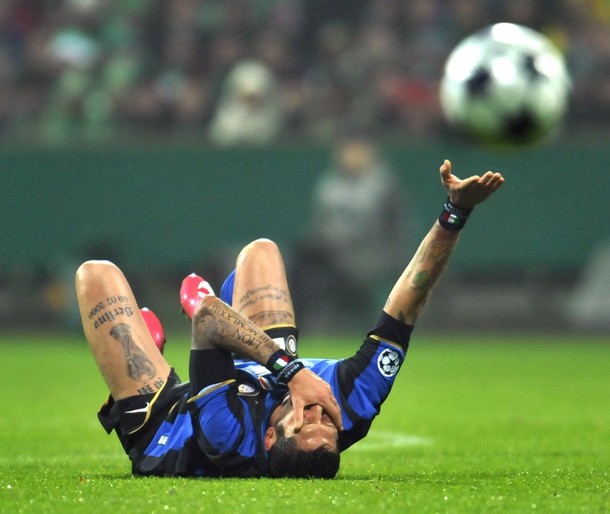
inter.theoffside.com :''It would be in their best interests to simply play a fluid, entertaining game and put on a good show for the fans. After all, they’re the ones buying the tickets and apparel and paying your salaries. It would be mutually beneficial for two teams to not be so self-interested to try and squeak out a 1-0 win, collapsing like a pile of bricks after the slightest semblance of contact so as to get closer to the final whistle.''
…“Postmodern” is a slippery concept, so much so that the difficulty in defining it touches the very essence of its meaning. The transition from the modern to postmodern world represents a move from irony, which suggests some comprehension of our beliefs, as well as involvement in our present circumstances, to deadpan, a lack of surprise to, and increasing remoteness from, our world. Postmodern literature, art, and film detach the audience from the content of the artistic subject, with little or no pretense to re-engage the two. As a result, the individual’s place in the world, as well as in the artistic work, diminishes to a cipher as one gets lost amid a plenitude of realities — “realities” because, they increase in proportion to our inability to resist them;from our stance of weakened beliefs. The postmodern world, thus, has little tragedy left in it — tragedy needs a heightened if not embarrassing measure of belief. Things must matter gravely.
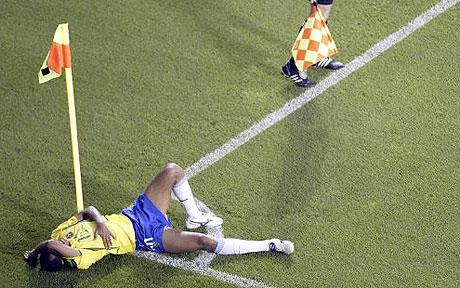
www.footie.co :''Uefa were roundly criticised for a bungled attempt to punish diving earlier this season when Arsenal striker Eduardo was banned for two matches. Uefa’s disciplinary committee, under pressure from the Scottish FA, ruled that Eduardo had dived to win a penalty against Celtic in the Champions League. However, Arsenal successfully appealed and the ban was overturned.''
The World Cup is exactly this mirror of the post modern world: a fake gravity. Something we should feel part of, but are completely remote to. The only nature of tragedy will be, with the whole world watching, a player will take a dive at a key at a key moment; someone will be engaged in play acting of an extravagantly transparent design that will alter an outcome. The ensuing outrage will be just posturing, absurd and petty. It exists because it serves a need ; the histrionics are just an explicit statement about contemporary reality that will outshine the greatness let alone the tragedy.
Late in the film career of Orson Welles,he made the documentary F for Fake (1976). In it, he formulates his most explicit statement about contemporary reality, leaving little room for greatness, let alone tragedy. And if F for Fake seems a superficial film, we will then have experienced the first lesson of postmodernism: playfulness, conscious illusions, and an undisguised reflexiveness about making movies. Put another way, what is seen in the film that seems real is not as real as it appears — but most especially we can’t trust the filmmaker Welles himself, he will lie to us and deceive us, if only to get at the heart of the movie’s main contention: you cannot trust anyone, especially anyone who asserts his or her authority without any basis or proof.
For football loving Latin nations, the game is a much theatre as it is athletic endeavor. There have been moats with alligators between fans and field in South America. A win is can be achieved by a cunning ruse, and thats perfectly fine. Thats why hail Mary’s and confession boxes exist. Its part of the game there; they don’t give a flying F if some hoser in Pittsburgh equates NFL ethics with gambling ,scandal ridden European football, where match fixing is an honor, and a right with its own set of moral obligations. At the international level its Al Davis’s motto of ”just win baby” and they will do so by any means necessary.
In the Welles’ film, in what seems at first glance an obvious point, we discover in practice that the more obvious it is the less we’ll get the point. This is precisely the lesson of the last part of the film, which deals with a story about Picasso and one of his mistresses. We are just watching a film, a bunch of moving images that represent a certain reality. The problem with movies as an art, the most difficult thing to understand, is that what we are shown and how we see what we’re shown have never been the same. However, the authority of the giant screen image is such that audiences have tended to view what they see literally. The image on the screen overwhelms us, as a preoccupying force, and Welles both takes advantage of this situation and tries to make us conscious of it.
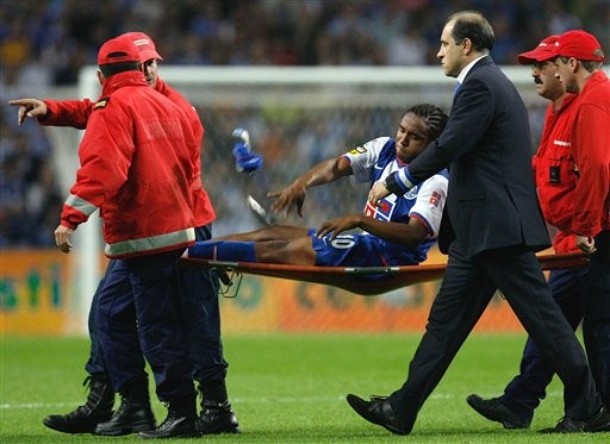
dailyballbreakers.com ''American’s love violence. Americans really love people getting hurt, by other people, in the form of competition. Americans really really hate when people fake that. In a land where football rules. And hockey fights excite. There is soccer with dives, and fake falls, and screams of bloody murder on contact. Soccer fans, I love the sports, and I understand that some nasty shit can happen. Guys snap legs, etc. BUT, you can’t be hurt unless you’re really hurt. And if you’re really hurt, you can’t use a lifeguard stretcher to carry a guy off (before he gets sprayed and runs back on after he was faking it to see if he could draw a red card). NFL player gets injured they bring out a cart, an ambulance, and tape his head to gurney. In Soccer, you go down, they have 3 minimum wage janitors, with a wooden board they found at the high school pool, and half carry the guy to the sidelines?? Ehhhh, no sale. Come on Soccer.''
The film image is only an image, and on this subtly unobvious premise Welles frames F for Fake and validates the fakery of film artistry by evincing the fakery of life/people, suggesting that movies have become the art of the 20th century precisely because of
innate mechanism to handle the unreal, the fake, and how this is uncritically accepted.At the 2006 World Cup in Germany, Cristiano Ronaldo of Portugal flirted with outright Oscar-winning dramatics on several occasions. The in the third-place game against the host Germans, he breezed past three defenders, superbly, but threw himself to the ground in at outrageous bit of acting. It was comical, but he never apologized nor owned up to stunt. All of them regret nothing and perhaps they shouldn’t. In turn, they claim North Americans are smug, small minded and hypocritical citing the archetypical American tourist who fails to understand why there is not a MacDonalds in every corner of the Globe.
At its center, the Welles film portrays two great fakers. One is Clifford Irving, who claimed to have had recorded interviews with Howard Hughes and published a biography based on these tapes. The hoax was finally exposed when Hughes allowed himself to be interviewed over the radio to disclaim any knowledge of Irving and the interviews. The episode caused a worldwide sensation, and Irving went to jail for a few years.
Coincidentally, Irving had written a book called Fake dealing with an art forger named Elmyr de Hory, the original subject of Welles documentary, the perfect living metaphor for Welles’ design: an artist who recreates artwork by the modern masters that few people if anyone can distinguish from the original work of that master. Elmyr was never prosecuted for selling many of his art works to major museums around the world; no museum could risk the humiliation, and subsequent loss of belief in their institution, of admitting that they had bought fake Manets, Cezannes, and Picassos. Elmyr lived in relative peace and opulence on the island of Ibiza, which also happened to be a Welles haunt.
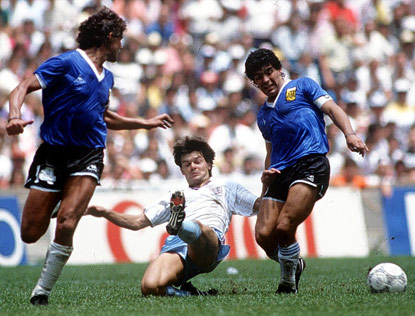
Steve Hodge. ''“When I think of Maradona now, primarily I think of his handball and how wrong it was but I think what a talent he was as well. That's why that shirt is so famous, it encapsulated his character. The sly cheater and the brilliant artist all in five minutes. “As a footballer watching him, he was a cut above all the rest. I was thankful for being put on the same pitch with him even though it cost me a World Cup Final place. Sometimes people will look to cheat in the hope they get away with it and I'm sure the same will happen during this tournament. It's always been there and always will be.”
The challenge that Elmyr presented to experts and authorities, civil and artistic, must have infatuated Welles greatly. The fragile basis on which all authority in society rests and how easily it can be undermined couldn’t have been more poignantly developed. Also, Welles understood the average person’s distrust for artistic and intellectual experts and critics, and that nothing would cause him greater satisfaction than finding out that experts couldn’t tell fakes from real works.
This might seem passé in a world that produces movies like The Matrix (1999), which bases its entire save-the-world plot on the fact that nobody can tell the real from an illusion. Welles delights at the proposition that a great faker, like Elmyr, is being written about by another faker, Clifford Irving. Further, Welles not only hammers home this point but starts to undermine his own sincerity for instance, calling his acting vocation the ultimate fakery.
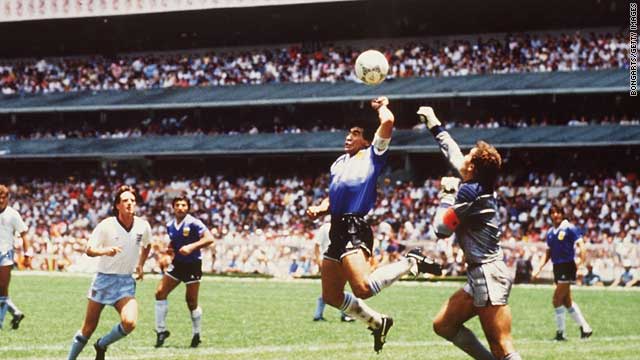
''Diego Maradona would go on to score one of the greatest goals of all time later in the game, but in the minds of many this was tarnished by the one he scored earlier. After England midfielder Steve Hodge's mis-hit clearance looped backwards into the penalty area, goalkeeper Peter Shilton went to punch it clear. But Maradona got there first -- leaping high into the air, the diminutive forward fisted it past Shilton and wheeled off celebrating. Maradona described it as the "Hand of God", but for England it came from a more devilish place.'' CNN
”We treat professional sports games as life lessons, but in truth prefer them to be more fictional, like Hollywood movies. Most professional hockey, NFL and MLB games have become so tidy they’re a tad unreal. The recent fuss over a missed call by umpire Jim Joyce and alleged insult to Detroit Tigers pitcher Armando Galarraga only illustrated the popular frustration with intrusion of messy reality into fantasies. The perplexity expressed by North American sports fans about diving and play-acting is also, maybe, an expression of frustration with multiculturalism. That’s an issue that emerges through sports all the time, if we are willing to admit it.” ( John Doyle )
Through serendipity, that the Irving biography of Hughes should collapse in the midst of the filming of F for Fake and artfulness, Welles creates another succession of mirrored reflections that purposefully blur the real and the fake until we can no longer see which is which. The illusions proceed to a human vanishing point, Elmyr himself.
Elmyr also represents a most dangerous person. An original fraud;In many ways, a mirror image himself to the celebrity: a person known for being known. A criminal whose crimes don’t resemble real crimes; moreover, his crimes once detected must go unpunished. Or nearly unpunished. He must promise to make no more fakes. Although, Welles hints that the circumstantial evidence shows that when Irving needed a forged signature, Elmyr was the best candidate to provide it. There is a melancholic, though not quite tragic note in F for Fake when Welles reflects on the fate of Elmyr’s talents being absorbed by his forgeries, as if his “real” talent suppresses real talent, possibly a talent Elmyr is afraid to test.


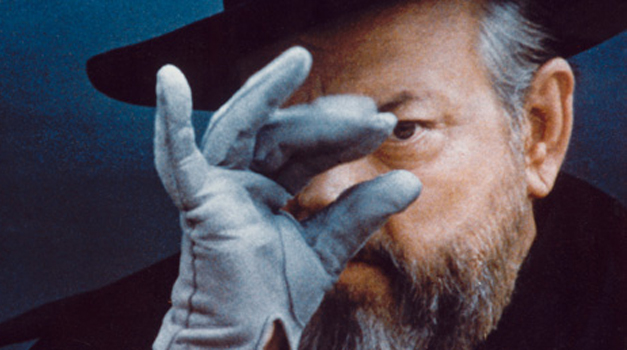



 COMMENTS
COMMENTS
I genuinely enjoyed reading this post.Thank you.
Thanks so much! It was delightful to write something that could mix Orson Welles and football; an odd juxtaposition to be sure. Best